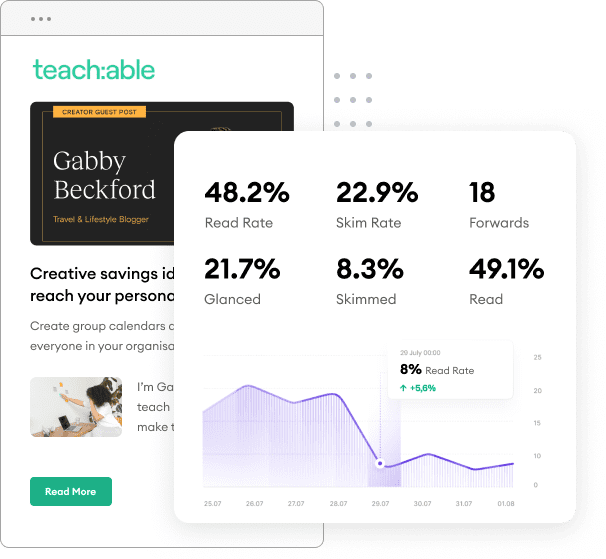Are you tired of trying to gain followers on Twitter just to get your content noticed? Are you looking for better ways for your content to reach your target audience? Maybe you’re just starting out as an entrepreneur and are trying to establish your brand and get the word out about your product or service. Medium might just be the right place for you to publish content and subsequently grow your business.
Medium is for writers, personal bloggers, journalists, marketers, companies — pretty much anybody can sign up and write on Medium (and they are). Medium has several unique attributes that set it apart from other blogging sites and social media platforms. These characteristics make it increasingly popular for digital marketers who have recognized the positive impact it could have on their businesses.
If you’re still unsure, we’ve compiled a list of five cool reasons why Medium is so popular and the benefits it offers for digital marketers below.
This may be the biggest element that sets Medium apart from other blogging sites and social media platforms. No one who chooses to write for Medium has to be well-known or come with a large following attached to their name or business.
Medium has a built-in audience, so it’s perfect for startups trying to make a name for themselves with their content. What’s more, the content published on Medium is rewarded for its quality instead of its quantity or the popularity of its author. The website’s algorithm determines post rankings based on how many people have read a post vs. just viewed it (this will be explained further below), and how many “recommendations” it received.
Note that the date it was published and the number of posts the author has published in the past are not deciding factors. This algorithm gives anyone the potential to have a post go viral no matter who they are or whether they have a popular blog or a million Facebook friends. It also eliminates those annoying “clickbait” articles that use a catchy headline to draw in readers who generally find the “meat” of the post to be lacking.
Medium does this by analyzing who has actually read a post compared to just clicking on it and rewarding those authors who have written quality, valuable content. All in all, this site is a refreshing change and definitely lives up to creator Ev Williams’ goal of giving a voice to those who have something to say, regardless of who they are or where they work.

Many companies use a business blog as the main way they share content, but this can be a very time-consuming endeavor, especially for small businesses who are short-staffed and can’t afford to pay someone to specifically manage the company blog.
Using Medium is less stressful because business owners aren’t tasked with the job of creating and maintaining the site; it’s operated independently from those who use it to publish. This is great for anyone who isn’t particularly tech-savvy or interested in website maintenance.
In addition, because the Medium algorithm doesn’t factor in dates, you’re not required to publish articles consistently to have a large audience see your work. In fact, if you just focus on one or two really good quality posts that are received well, you could go weeks or months without needing to write another. Just check the site every once in a while to make sure your name is still on top.
Now I know what you’re thinking. What about SEO? What about drawing people to my website to help rankings? Indeed, Medium isn’t going to be quite as beneficial; however if you already have a blog Medium could still be helpful because you can link back to your blog in your content and potentially gain more traffic and/or increase blog engagement.
What’s the point in reaching a large audience if it’s not one full of people who are interested in your industry? Thankfully, Medium eliminates this issue by automatically helping published posts be seen by those who are most intrigued by the topic.
The site contains many different “collections,” or groups of articles categorized by topics. Subscribers to Medium can follow certain collections so that they’re notified whenever something new is posted that they might be interested in. This is great for business owners who can submit their posts to whatever collections are relevant to them, which puts them in direct contact with their target audience.
You can also assign up to three tags to each post to further specify who sees the content. It’s not enough for your content to just be “viewed” by your target audience; they need to be engaged in order for that traffic to turn into conversions.
While it’s not about popularity, Medium definitely doesn’t ignore social media’s benefits (Ev Williams is the co-founder of Twitter, after all). And aside from running a company blog, most business owners share content on social media as well, so it only makes sense that a writing platform would work well with all the social ones, too.
One way to enhance your audience on Medium is by connecting your Twitter and Facebook accounts. Doing so will automatically transfer your followers from these sites over to Medium. All you have to do is go into “settings” and “connections.”

Image from Neal Schaffer Blog
It’s pretty much a no-brainer, and while you definitely don’t need a large social media following to be successful on Medium, it definitely doesn’t hurt to bring some of your friends over to check out your posts.
Medium makes it very easy to analyze the successes and failures of your content, so if you’ve been struggling to produce valuable posts that lead to conversions in the past, this might be another reason it’s time to start using Medium.
Each article you post on Medium is tagged with the average time it takes someone to read the post, so if you’re wondering whether your short or long posts perform better, all you have to do is look at the stats. In other words, you will get more data on Medium than maybe you would on your blog for testing.
There is also a button labeled “referrers” at the bottom of each article title. If you click on it, you will be directed to a page that shows how many views the post received from various traffic sources. This makes it really easy to see where your viewers are coming from and where they’re not, so you know where to focus your energy in the future.
Finally, as discussed above, Medium determines whether or not posts are being read or just viewed, which could be extremely helpful for entrepreneurs trying to determine if their posts contain value for their target audience. Authors are rewarded for readability, not just for traffic. This should be good news for business owners who are truly interested in producing content that is engaging for their audience.
Overall, Medium can be an incredible marketing channel for your business, provided that your focus is on the quality of the content you’re publishing. Many entrepreneurs find it helpful to publish only on Medium for a variety of the reasons written above. Still, if you’re not sold on that idea, you can always just use the site to repost articles that have been published in other places.
However you choose to use it, Medium is definitely a breath of fresh air in an online world full of clickbait articles and businesses competing for the largest social media following. I definitely think it’s worth checking out, even if all you do is read a couple of cool articles you may never have seen otherwise.
Do you use Medium for your business? What’s your experience been like? Comment in the section below!
All screenshots were taken by the author on Medium.com March 2017 unless otherwise specified.
